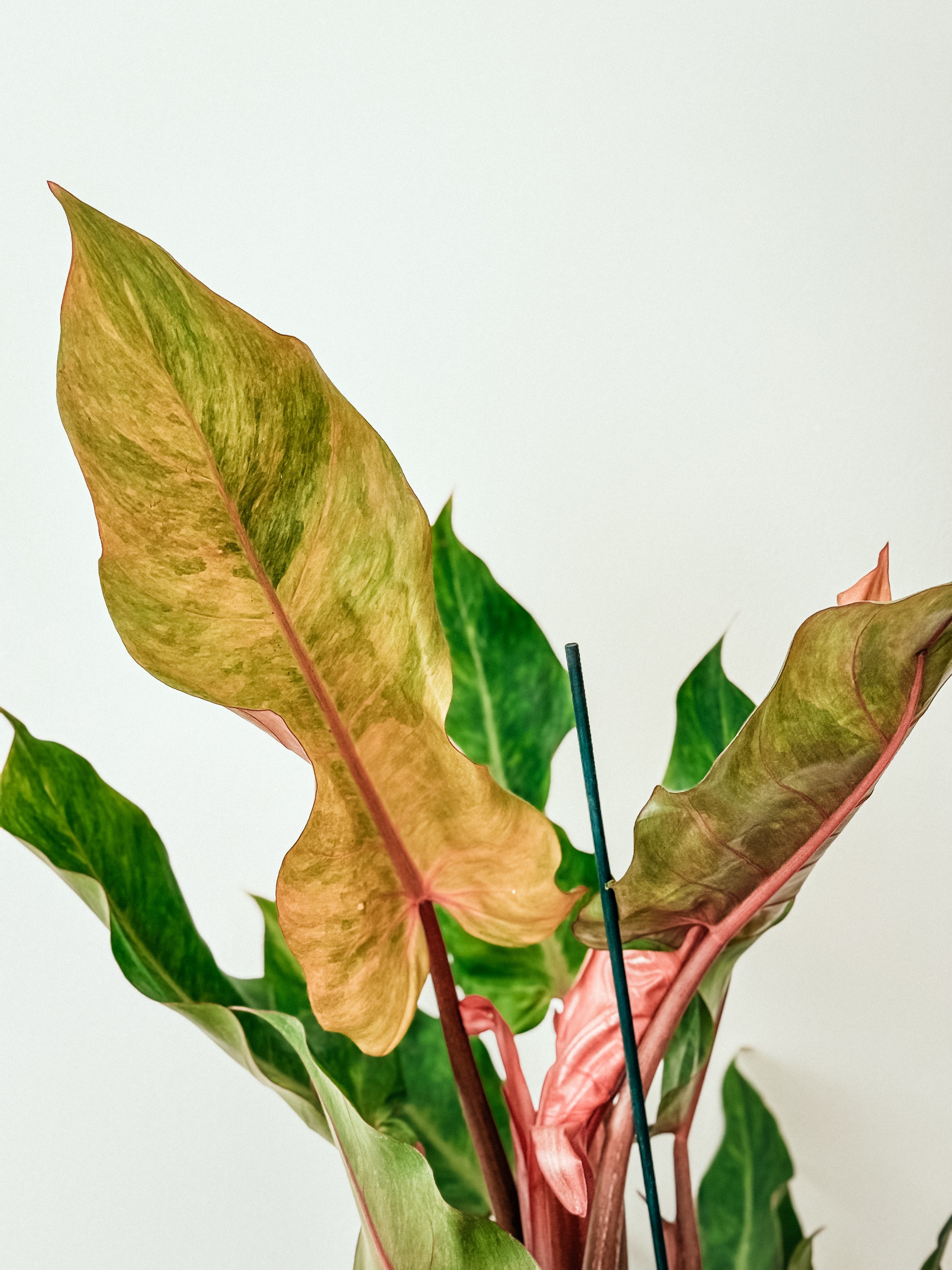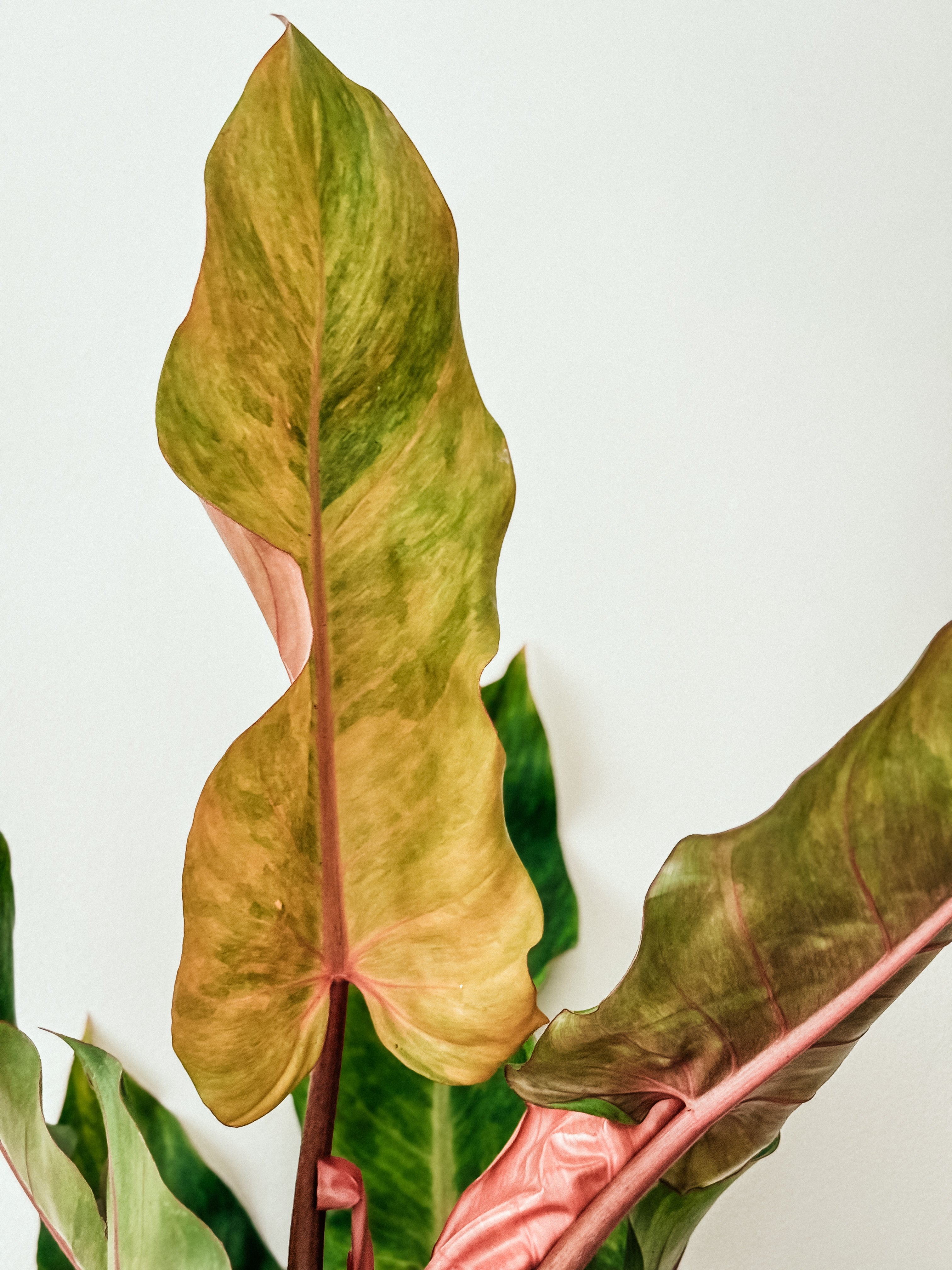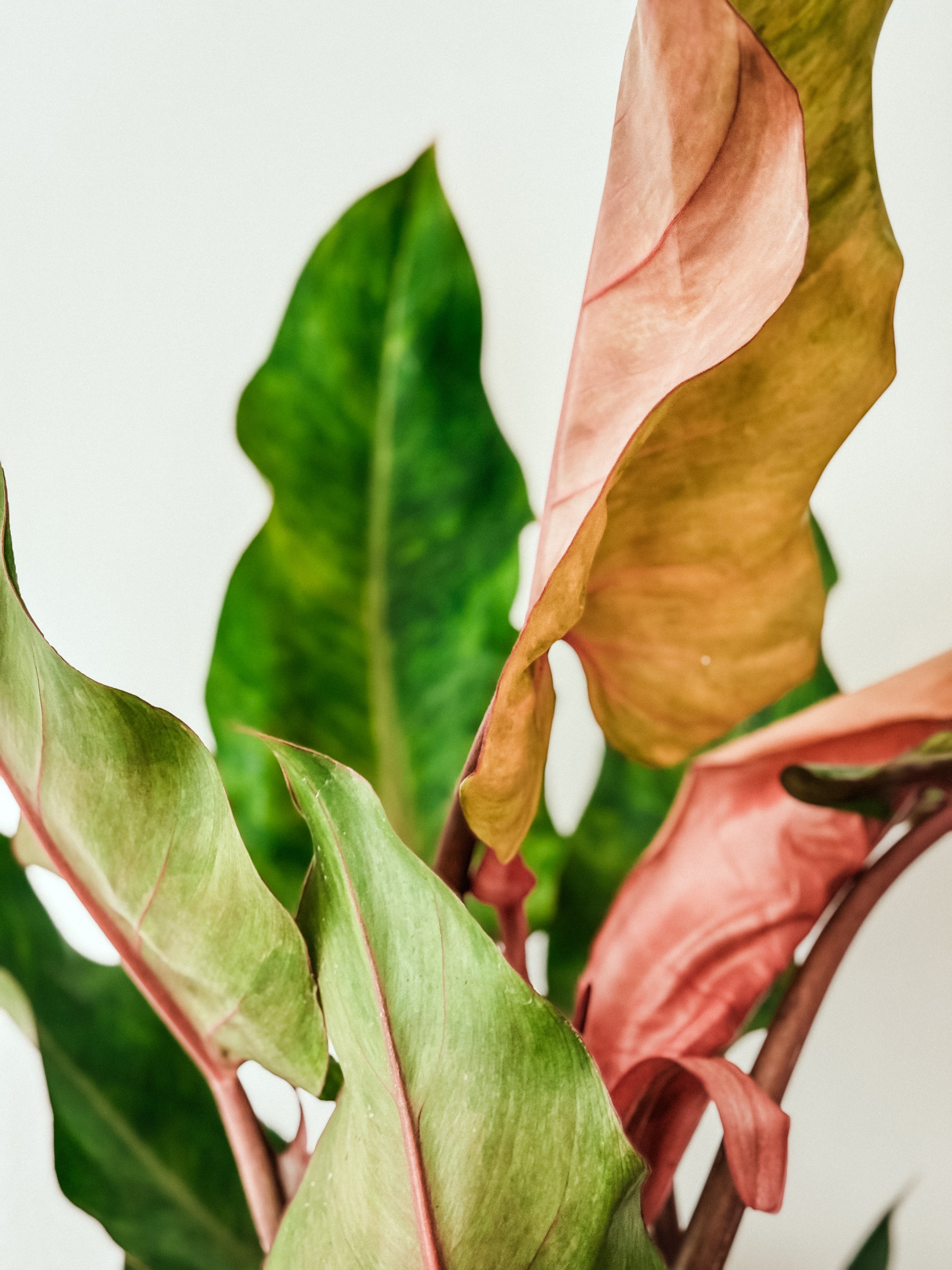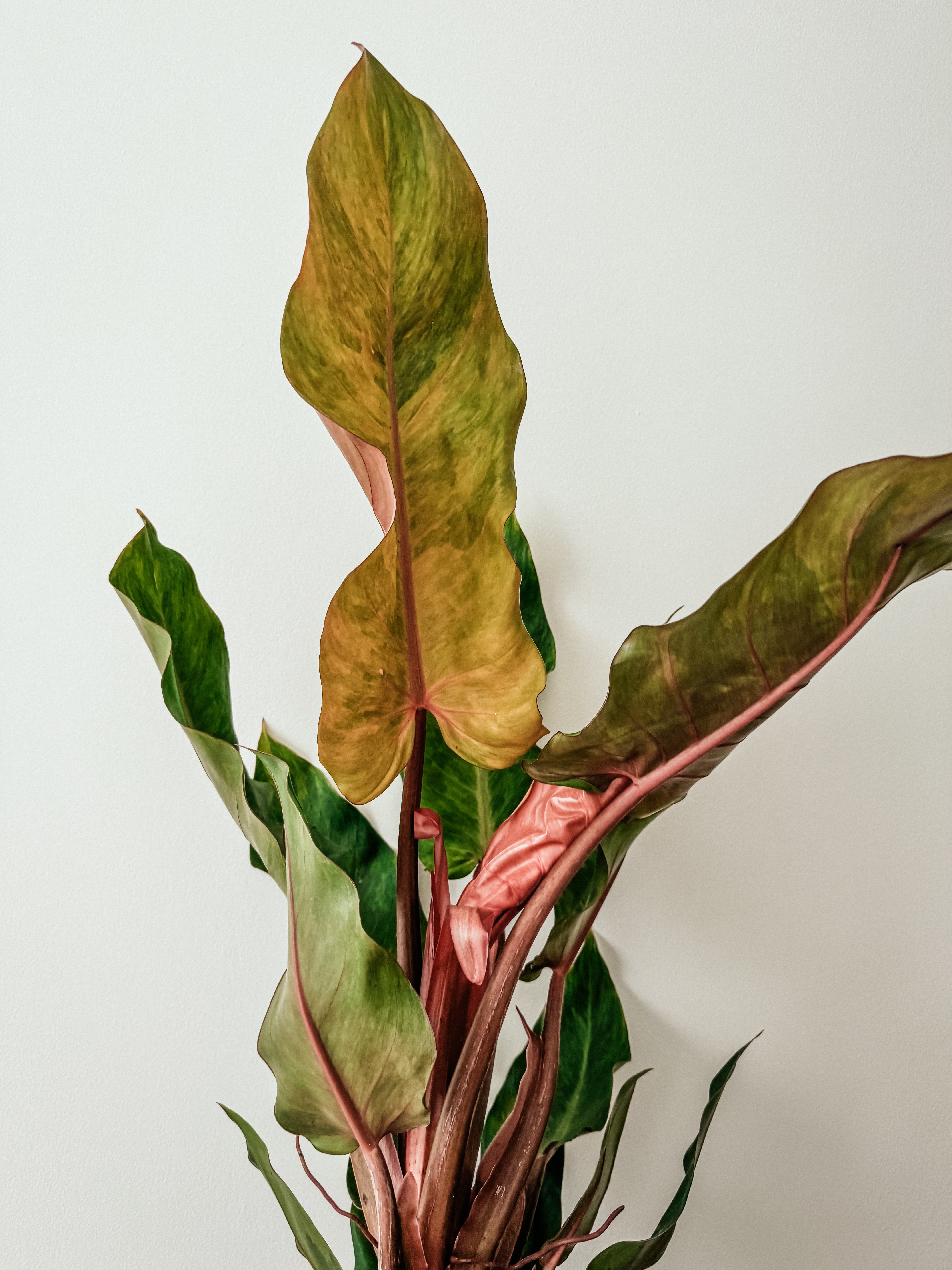Philodendron Orange Marmalade - Large
Couldn't load pickup availability
Philodendron ‘Orange Marmalade’, a colorful hybrid Philodendron prized for its orange and green variegated foliage. Here’s a detailed care guide for it:
🌱 Light
-
Thrives in bright, indirect light.
-
Too little light = duller color and slower growth.
-
Avoid direct, harsh sun as it may burn the leaves.
-
A grow light can help maintain its orange variegation if your space is dim.
💧 Watering
-
Water when the top 1–2 inches of soil feel dry.
-
In spring and summer, this may be weekly; in fall/winter, less often.
-
Ensure the pot drains freely and discard excess water to prevent root rot.
🌡️ Temperature & Humidity
-
Prefers 65–85°F (18–29°C).
-
Keep away from sudden temp changes.
-
Likes moderate to high humidity (50–70%). Use a humidifier or group with other plants if your air is dry.
🌸 Fertilizer
-
During the growing season (spring–early fall), feed every 4–6 weeks with a balanced liquid fertilizer diluted to ¼–½ strength.
-
Skip or reduce fertilizing in winter when growth slows.
🌱 Soil Mix
Use an airy, well-draining mix typical for aroids:
-
40% good-quality potting soil
-
30% orchid bark or chunky perlite
-
20% coco coir or peat moss
-
10% horticultural charcoal or pumice
This prevents compaction and encourages healthy root growth.
🌿 Growth Habit & Pruning
-
It’s a climbing Philodendron, so provide a moss pole or trellis to encourage larger, more colorful leaves.
-
Trim leggy vines or yellow leaves to keep it bushy and healthy.
🪴 Repotting
-
Repot every 1–2 years or when the plant becomes root-bound.
-
Spring is the ideal time to repot.
🐛 Pests
-
Watch for spider mites, mealybugs, and scale.
-
Wipe leaves occasionally and inspect the undersides for early signs of pests.
⚠️ Toxicity
-
Like most Philodendrons, toxic if ingested by pets or humans due to calcium oxalate crystals. Keep out of reach of pets.








